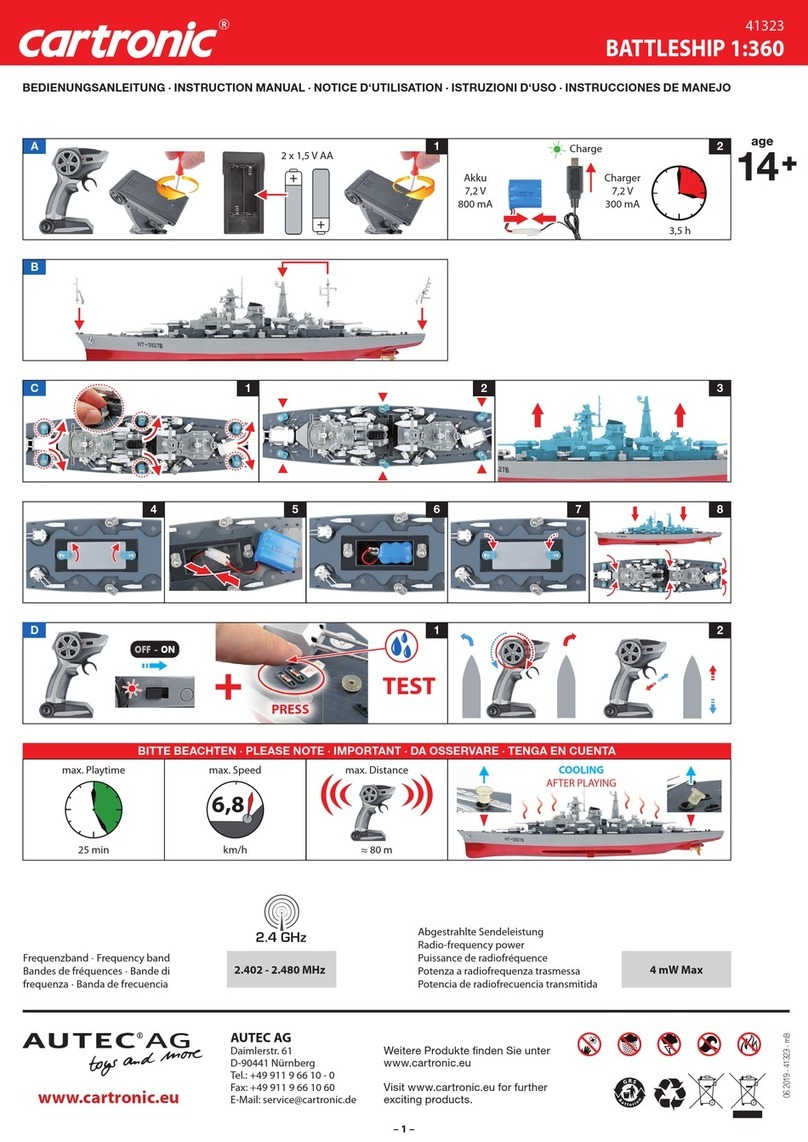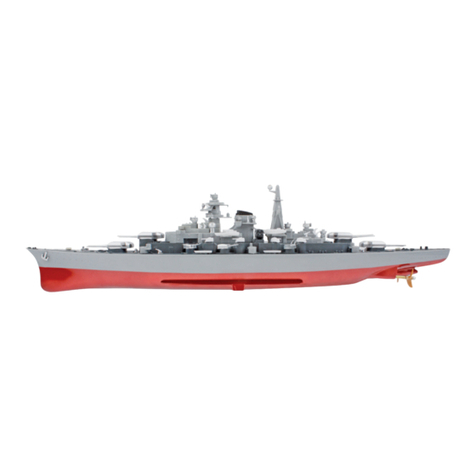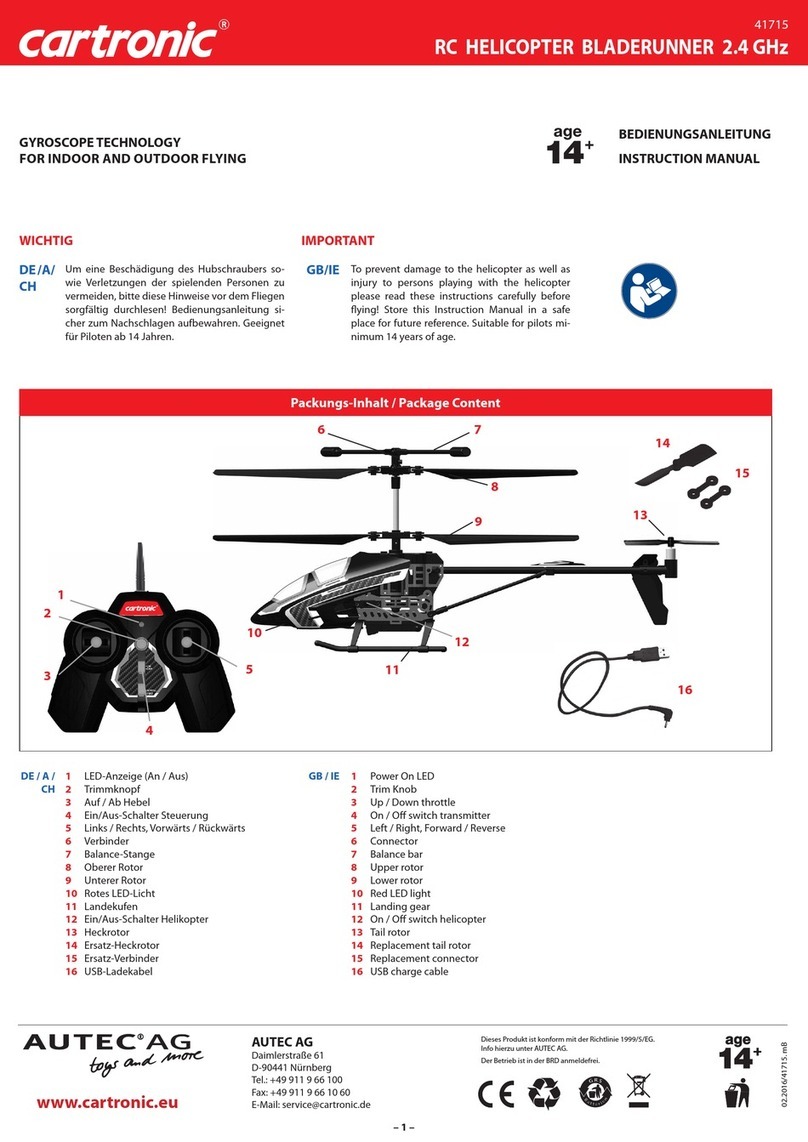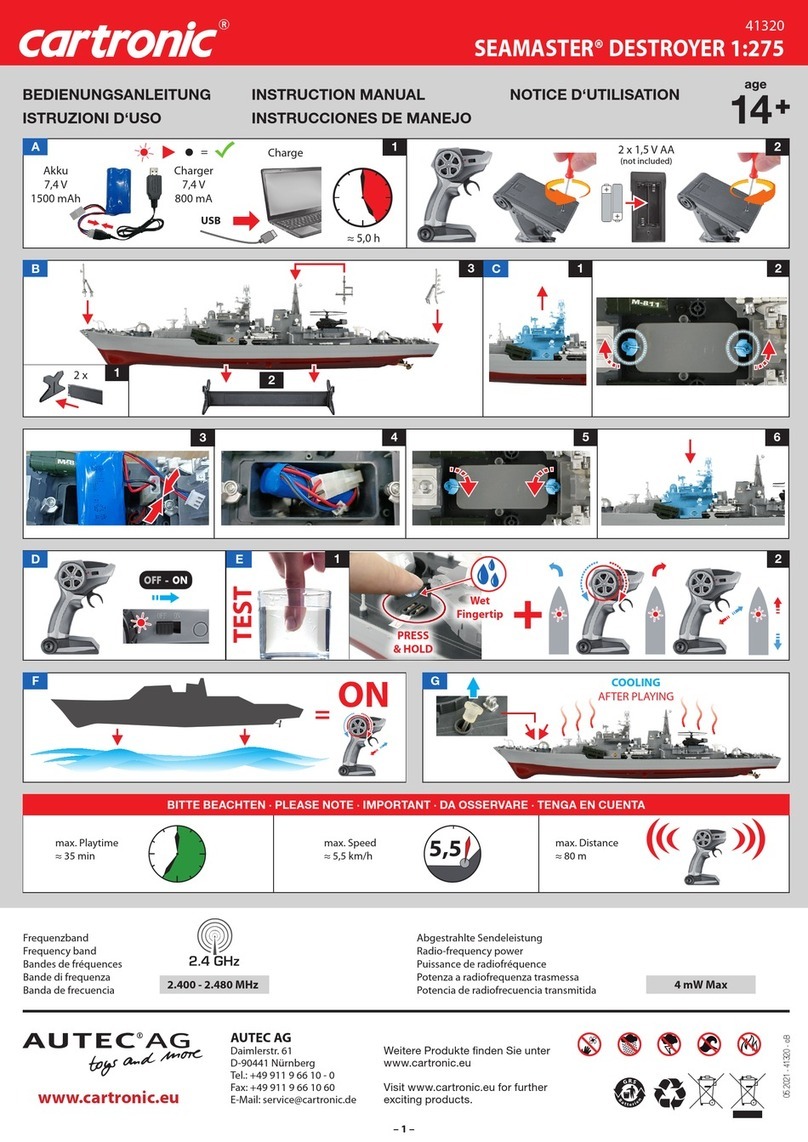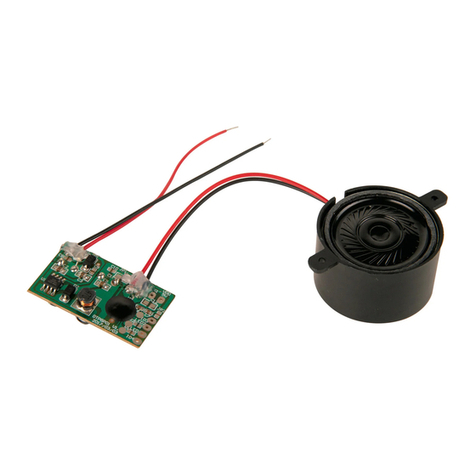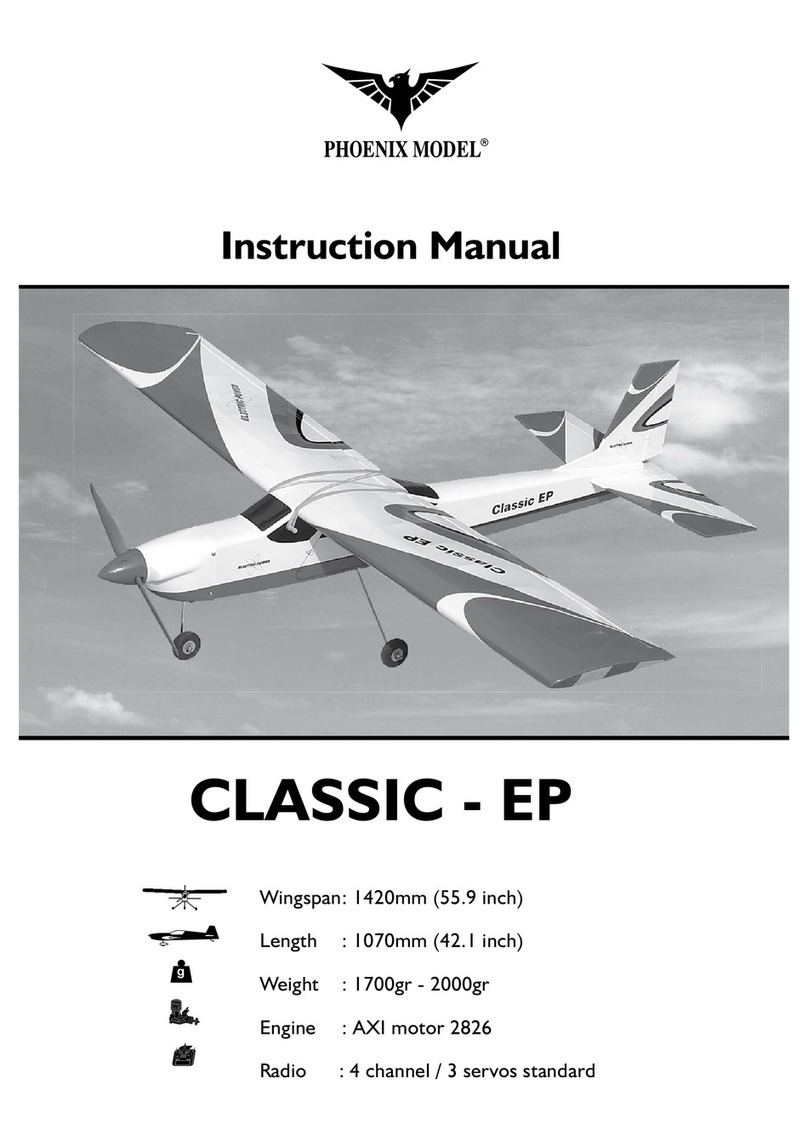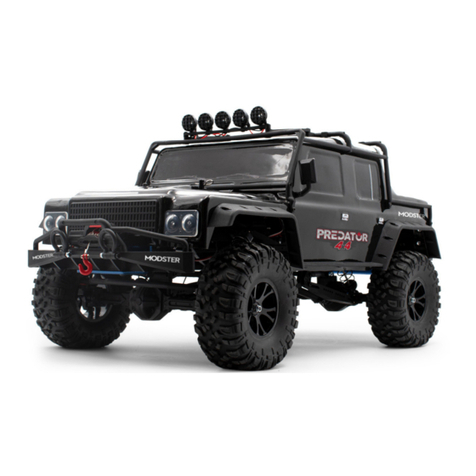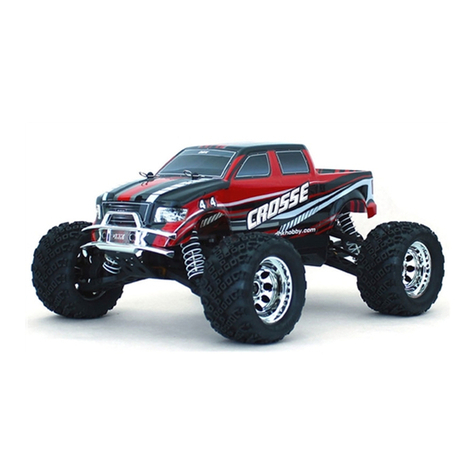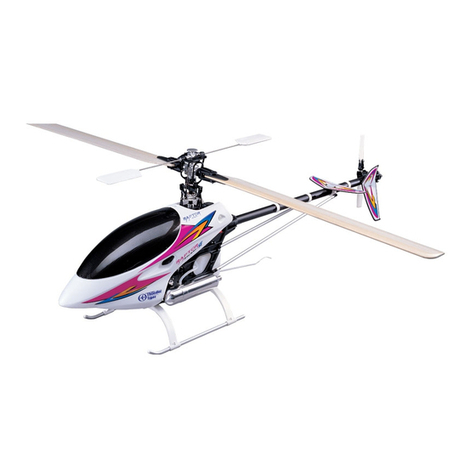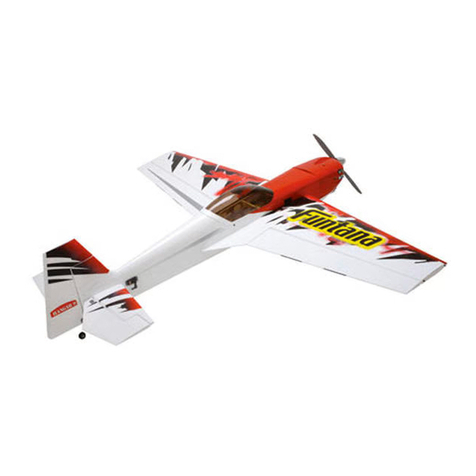AUTEC cartronic SEAMASTER 41350 User manual

– 1 –
SEAMASTER® TURBOJET BOAT
41350 • 41351
08.2022 - 41350f - oB
www.cartronic.eu
AUTEC AG
Daimlerstr. 61
D-90441 Nürnberg
Tel.: +49 911 9 66 10 - 0
Fax: +49 911 9 66 10 60
E-Mail: service@cartronic.de
Weitere Produkte nden Sie unter
www.cartronic.eu
For further exciting products visit
www.cartronic.eu
Abgestrahlte Sendeleistung
Radio-frequency power
Puissance de radiofréquence
Potenza a radiofrequenza trasmessa
Potencia de radiofrecuencia transmitida
Frequenzband
Frequency band
Bandes de fréquences
Bande di frequenza
Banda de frecuencia 2.418 - 2.465 MHz 1 mW Max
BEDIENUNGSANLEITUNG
ISTRUZIONI D‘USO
INSTRUCTION MANUAL
INSTRUCCIONES DE MANEJO
NOTICE D‘UTILISATION
A 1 Charge
Charger
4,2 V
800 mAx2
(= 1600 mA)
≈ 3,5-4,0 h
2 3
4 x 1,5 V AA
(not included)
USB
Akku
7,4 V
2000 mAh
5 V
0,5-2,0 mA
2
B1543
BITTE BEACHTEN PLEASE NOTE IMPORTANT DA OSSERVARE TENGA EN CUENTA
25
≈ 12 min 20 - 25 km/h
max. Playtime max. Speed max. Distance
≈ 60 m
C16 1
2
= Blinking
=
ON: Press
4a4F G
In 90 sec !In 90 sec !
AFTER
PLAYING
OPEN
WATER
OUTLET
Lights: Off / On
Long Press: Demo Mode
Demo Mode:
Battery Power
Now Return !Now Return !
100
%
0
km/h
1
23
D
E2
Speed
Trim
Steering
Trim
Turn Over
Reset
Players
Akku
USB
Box
2.
1.
3.
4.
Stop

– 2 –
SEAMASTER® TURBOJET BOAT
41350 • 41351
CH
Probleme und Lösungen
Das Boot reagiert nicht:
Sind die Batterien richtig eingelegt?
Sind die Batteriekontakte verbogen
oder verschmutzt?
Sind die Batterien entladen oder defekt?
Lässt die Leistung der Batterien/Akkus nach?
Verursachen Metallgitter/Zäune Störungen?
Benden sich Sende- oder Strommasten
in der Nähe?
Diese können zu unkontrolliertem Verhalten
des Bootes führen.
Sind Walkie-Talkie/CBN-Funker in der Nähe,
die Störungen hervorrufen können?
Der Akku kann nicht vollständig
geladen werden:
Ist das USB-Ladekabel defekt?
Ist der Akku beschädigt?
Geignete Wasserächen:
Schwimmbad, Teich, See, Fluss
Nicht geeignete Wasserächen:
Das Boot soll nicht im Salzwasser (Meer) benutzt werden. Salz würde die Metallteile
korrodieren lassen und die Gewährleistungsansprüche gehen verloren.
Beim Betrieb in Gewässern darauf achten, dass das Wasser ruhig ist, ohne Wellen oder
starke Turbulenzen.
Nicht in Flüssen mit starker Strömung fahren lassen.
Bitte lesen Sie die Aufbau- und Sicherheitshinweise vor Gebrauch sorgfältig durch.
Diese Anweisungen für spätere Nachschlagezwecke aufheben, sie beinhalten wichtige Informationen.
Dieses Produkt nur gemäß der Anleitung benutzen.
Andere Anwendungen als die in der Anleitung beschriebenen, gelten als nicht bestimmungsgemäß
und können Schäden verursachen, für die keine Haftung übernommen wird.
Technische Daten:
Fahrfunktionen: Vorwärts, links, rechts, Rotation
Funkreichweite: max. 60 m
Frequenz: 2.4 GHz
Ladezeit: ca. 3,5-4,0 h
Fahrtdauer: ca. 12 min
BEDIENUNGSANLEITUNG · INSTRUCTION MANUAL · NOTICE D‘UTILISATION · ISTRUZIONI D‘USO · INSTRUCCIONES DE MANEJO
Sie benötigen:
4 x 1,5 V AA
Batterien für die Fernbedienung
(nicht enthalten)
Verpackungsinhalt:
1 x RC Turbojet Boot
1 x RC Fernbedienung
1 x Schraubendreher
1 x Bedienungsanleitung
1 x Li-ion Akku für das Boot
1 x USB-Ladegerät
Sicherheitshinweise
Bitte vermeiden Sie, dass Kinder Kleinteile verschlucken.
Um unvorhergesehenen Betrieb zu vermeiden, sollten die Batterien bei
Nichtverwendung aus dem Produkt genommen werden.
Wie bei allen Elektro-Produkten sollten Vorsichtsmaßnahmen ergrien werden um
elektrische Schläge zu vermeiden.
Um das Eindringen von Wasser zu vermeiden, das Drainageventil (Abb. G)
verschließen.
Wenn das Boot nach Verwendung im Wasser anhält, nehmen Sie es sofort außer
Betrieb. Reinigen Sie alles mit einem weichen trockenen Tuch und entfernen Sie alle
Batterien. Lassen Sie das Boot bei geöfnetem Akkufach trocknen.
Bitte darauf achten, dass Haare, Finger oder lose Kleidungsteile
nicht mit drehenden Teilen in Berührung kommen.
Niemals die Bewegung von drehendenTeilen blockieren.
Bitte beachten Sie die maximale Reichweite von 60 m.
Umgang mit Batterien
Batterien und Akkus dürfen nicht im Hausmüll entsorgt
werden, sondern sind Sondermüll. Der Inverkehrbringer
ist zur Rücknahme gebrauchter Batterien gesetzlich
verpichtet. Sie können die Batterien nach Gebrauch in
unserer Verkaufsstelle oder in unmittelbarer Nähe beim
Handel oder in kommunalen Sammelstellen unentgelt-
lich zurückgeben. Batterien regelmäßig überprüfen
und nach Gebrauch entnehmen, um ein eventuelles
Auslaufen zu verhindern. Den Akku nur entladen lagern
(Brandgefahr). Batterien sind nach Polarität einzulegen.
Es sollen nur die empfohlenen Batterien (1,5 V AA) ver-
wendet werden. Nicht auadbare Batterien dürfen nicht
aufgeladen werden. Verbrauchte Batterien aus dem
Spielzeug entfernen und wie vom Hersteller empfoh-
len entsorgen. Anschlußklemmen dürfen nicht kurzge-
schlossen werden. Auadbare Batterien vor dem Laden
aus dem Spielzeug nehmen. Auadbare Batterien nur
unter Aufsicht Erwachsener laden. Ungleiche Batterie-
typen oder neue und gebrauchte Batterien dürfen nicht
zusammen verwendet werden.
Akku Ladeanleitung
Nutzen Sie eine vorhandene USB Ladequelle (z. B. PC, Po-
wer Bank, externes USB Ladegerät). Während des Lade-
vorgangs blinkt die grüne Kontrolleuchte im USB Stecker
und leuchtet dauerhaft, sobald der Vorgang beendet ist.
Um beste Ladeergebnisse zu erzielen, laden Sie bitte
den Akku immer gemäß dieser Anweisung auf. Der Akku
muss vor Fahrtbeginn vollständig geladen sein. Vor
jedem Auaden bitte den Akku vollständig entleeren.
Benutzen Sie dazu das Boot, bis der Antrieb stoppt. Der
Akku muss vor dem Laden aus dem Gerät entfernt wer-
den. Der Akku muss vor dem Wiederauaden abkühlen.
Beim Laden können sich Akku und Ladegerät erwärmen.
Achten Sie bei der Verwendung im Wasser unbedingt
darauf, dass das Boot rechtzeitig zurückgeholt wird, be-
vor der Akku leer ist.
Zusätzliche Tipps zu
wiederauadbaren Akkus
Man kann den Akku einen Tag vor der Verwendung la-
den, z.B. wenn man das Produkt als Geschenk verwen-
den möchte. Es ist besser den Akku voll zu laden, auch
wenn das Boot nur kurzzeitig betrieben werden soll.
Der Akku behält bei heißem Wetter seine Ladung nur
für kurze Zeit.
Sonstiges
Die Gewährleistungszeit beträgt 2 Jahre ab Kauf. Bei
Reklamationen Vorlage des Kaufbeleges erforderlich.
Technische und designbedingte Änderungen vorbe-
halten.
Akku-Sicherheitshinweise
Auadbaren Akku nur unter Aufsicht Erwachsener la-
den. Lassen Sie keine Kinder mit dem Ladegerät spielen.
Bitte alle Anweisungen zum wiederauadbaren Akku
und dem Ladegerät lesen und befolgen. Bitte nur den
beiliegenden Akku verwenden, andere Akku-Typen
können explodieren, Verletzungen bei Personen oder
sonstige Schäden verursachen. Kein beschädigtes Lade-
gerät verwenden!
Das Ladegerät und den Akku regelmäßig auf Schäden an
Kabel, Stecker, Abdeckung oder anderen Teilen untersu-
chen.
Inbetriebnahme und Fahrtende
Geladenen Akku einlegen und Deckel fest verschließen
(Abb. B1-B6), weiße Lichter blinken (Abb. B4). Fernbe-
dienung einschalten (Abb. C1). Nach dem Verbindungs-
vorgang leuchtet die grüne LED an der Fernbedienung
und das weiße Licht am Boot dauerhaft. Beim Betrieb im
Wasser: Geradeauslauf korrigieren (Abb. E1), Geschwin-
digkeit einstellen (Abb. E2), Boot umdrehen (Abb. E3),
Lichter aus-/einschalten sowie bei Bedarf durch langes
Drücken Demomodus aktivieren (Abb. E4, 4a). Demo-
Modus: Das Boot fährt 1 m geradeaus, fährt jeweils ei-
nen Kreis nach links und rechts, danach stoppt es. Wenn
der Akku fast leer ist, blinken die Lichter am Boot und
die Fernbedienung gibt ein mehrfaches Warngeräusch
ab (Abb. F), dann das Boot sofort zurück an das Ufer fah-
ren und aus dem Wasser nehmen. Der Akku wird ab dem
Warngeräusch nach 90 Sekunden leer sein. Nach dem
Betrieb das Drainageventil önen, Wasser abießen und
die Elektromotoren abkühlen lassen (Abb. G).
•
•
•
•
•
•
•
•
•
•
•
•
•
•
•
•
•
•
•
•
•

– 3 –
SEAMASTER® TURBOJET BOAT
41350 • 41351
IEGB
Please read the setup and safety instructions in their entirety before using the product.
Keep the instructions for future reference, as they contain important information.
This product may only be used according to its instructions.
Any use other than that described in the instructions is considered to be improper and
may cause damage for which no liability will be assumed.
Technical Data:
Running functions: Forward, left, right, turn over
Signal range: max. 60 m
Frequency: 2.4 GHz
Charging time: approx. 3,5-4,0 h
Operational time: approx. 12 min
BEDIENUNGSANLEITUNG · INSTRUCTION MANUAL · NOTICE D‘UTILISATION · ISTRUZIONI D‘USO · INSTRUCCIONES DE MANEJO
You need:
4 x 1,5 V AA
batteries for transmitter
(not included)
Contents:
1 x RC Turbojet Boat
1 x RC Transmitter
1 x Screwdriver
1 x Manual
1 x Li-ion boat storage battery
1 x USB charger
Safety instructions
Please prevent children from swallowing small items.
To avoid accidental operation, remove batteries when not in use.
As with all other electrical products, certain precautions should be taken to prevent
the risk of electrical shocks.
To avoid water ingress, close the drainage valve (Fig. G).
Switch the boat o immediately if it remains in the water after use. Clean everything
with a soft, dry cloth and remove all the batteries. With the battery compartment
open, allow the boat to dry.
Please ensure that hair, ngers or loose clothing
do not come into contact with rotating parts.
Never block the movement of rotating parts.
Please observe the maximum range of 60 m.
Commissioning and end of journey
Insert charged battery and close lid tightly (Fig. B1-B6),
white lights will ash (Fig. B4). Switch on the remote
control (Fig. C1). After the connection process, the green
LED on the remote control and the white light on the
boat will be solid. When operating in the water: Correct
straight-line stability (Fig. E1), set speed (Fig. E2), turn
boat around (Fig. E3), switch lights on/o and, if requi-
red, activate demo mode with a long press (Fig. E4, 4a).
Demo mode: The boat goes straight 1 m, respectively
drives a circle to the left and right, afterwards it stops.
When the battery is low, the lights on the boat will
ash and the remote control will emit multiple warning
sounds (Fig. F), then immediately drive the boat back to
shore and take it out of the water. The battery will be
empty after 90 seconds from the warning sound. After
operation, open the drainage valve, drain the water and
allow the electric motors to cool (Fig. G).
Please read and follow all the instructions supplied for
the storage battery and the charger. Please use only the
enclosed storage battery. Other types may explode and
cause injury or result in other types of damage. When
charging your battery in a foreign country, please con-
sider that socket voltages may dier, in order to avoid
damaging your charger. Do not use the charger if it is
damaged. Regularly inspect the charger and the storage
battery for damage to cables, connectors, covers and
other parts.
Instructions for charging
the storage battery
Use an existing USB charging source (e.g. PC, power
bank, external USB charger). The green indicator light
in the USB connector ashes during the charging pro-
cess and lights up continuously as soon as the process
is complete. To achieve the best results, always charge
the battery in accordance with these instructions. The
battery must be fully charged before starting to drive.
Always completely drain the battery before recharging.
To do this, use the boat until the drive stops. The storage
battery must be removed from the device before being
charged. The battery must be allowed to cool o before
recharging. When charging, the battery and charger can
warm up. When using the ship in water, it is essential to
make sure that the boat is brought back well before the
storage battery is empty.
Handling batteries
Batteries and rechargeable batteries must not be dispo-
sed of in domestic waste, but rather in hazardous sub-
stance waste. The person placing them on the market
is legally obliged to take back used batteries. You may
bring used batteries to our store or other stores in your
vicinity or to community collection areas free of charge.
Regularly check the batteries and remove after use to
prevent them from leaking. Always discharge the batte-
ry before putting it into storage (re hazard). Batteries
must be inserted according to polarity. Only use recom-
mended batteries (1,5 V AA). Non-rechargeable batte-
ries must not be recharged. Used batteries must be re-
moved from the toy and disposed of as recommended
by the manufacturer. Terminals must not be short cir-
cuited. Remove rechargeable batteries from toy prior to
their recharging. Rechargeable batteries must only be
charged under adult supervision. Unequal battery types
or new and used batteries must not be used together.
Additional tips for using
rechargeable batteries
The battery can be charged one day in advance, for
example if you wish to give away the product as a
present. It is better to fully charge the battery, even if
the boat is to be operated only for a short time. In hot
weather the battery will only retain its charge for a
short time.
Other
The guarantee covers a period of 2 years starting from
the day of purchase. Proof of purchase
must be shown when requesting money back. Right is
reserved to eect technical and
design-related changes.
Problems and solutions
The boat doesn`t work:
Have you placed the batteries/rechargeable
batteries in the correct position?
Are the contacts of the battery bent or dirty?
Are the batteries empty or defective?
Is the battery/rechargeable battery charge
becoming low?
Are there interferences caused
by metal wire fencing?
Transmission or power masts often lead to an
uncontrollable behaviour of the boat.
Are there any Walkie-Talkies or CBN-radio operators
nearby that lead to interferences??
The rechargeable battery cannot be fully charged:
Is the USB charging cable defective?
Is the rechargeable battery damaged?
•
•
•
•
Suitable expanses of water:
Swimming pools, ponds, lakes, rivers
Unsuitable expanses of water:
The boat must not be used in saltwater (ocean). Salt would cause corrosion to metal
parts, and this would invalidate the warranty.
When using the vehicle on a lake, make sure that the water surface is calm and that
there are no waves or turbulence.
Do not use the boat on a river with a strong current.
•
•
•
•
•
•
•
•
•
•
•
•
•
•
•
•
•

– 4 –
SEAMASTER® TURBOJET BOAT
41350 • 41351
BE CHFR
Problèmes et remèdes
Le bateau ne réagit pas:
Est-ce que les piles/accus sont bien insérés?
Est-ce que les contacts de pile sont
déformés ou sales?
Est-ce que les piles sont déchargées ou défecteuses?
Est-ce que les piles/accus sont moins
puissants?
Est-ce que des grillages métallique/ des clôtures
causent des parasites?
La distance d‘utilisation correspond-t-elle à la portée
radio?
Des pylônes díune ligne émettrice ou électrique
provoquent souvent un comportement incontrôlé
du bateau.
Est-ce que des walkie-talkie/radio CBN se trouvent á
proximité, lesquels pourraient causer des parasites?
L‘accu ne se recharge pas complétement:
Le câble de chargeur USB est-elle défectueuse?
La batterie est-elle endommagée ?
•
•
•
•
•
•
•
•
•
Données techniques
Fonctions pour la conduite: Tout droit, gauche, droite, rotation
Portée radio: max. 60 m
Fréquence: 2.4 GHz
Durée de chargement: environ 3,5-4,0 h
Durée de navigation: environ 12 min
Vous avez besoin:
4 x 1,5 V AA
pour la télécommande
(ne sont pas incluses)
BEDIENUNGSANLEITUNG · INSTRUCTION MANUAL · NOTICE D‘UTILISATION · ISTRUZIONI D‘USO · INSTRUCCIONES DE MANEJO
Consignes de sécurité
Veillez à ce que les enfants n‘avalent pas les petits éléments.
An d‘éviter tout fonctionnement intempestif, retirer les piles du jouet en cas de non-
utilisation.
Comme pour tous les produits électriques, prendre des mesures de
précaution an d‘éviter les décharges électriques.
Fermer la vanne de drainage (g. G) an d‘empêcher l‘eau de s‘inltrer.
Éteignez immédiatement le bateau après la navigation. Nettoyez le tout avec un
chion doux et sec et retirez toutes les piles. Faire sécher le bateau en laissant le
compartiment de la batterie ouvert.
Veillez à ce que cheveux, doigts ou vêtements amples n‘entrent pas en contact avec
des pièces en rotation.
Ne jamais bloquer le mouvement de pièces en rotation.
Prenez en compte que la portée maximale est de 60 m.
Avant la mise en route du jouet, veuillez lire attentivement la notice d‘utilisation.
Conserver ces instructions pour une consultation ultérieure.
Elles contiennent des informations importantes. Ce produit doit strictement être utilisé selon la notice d‘utilisation.
Toute autre utilisation que celle décrite dans cette notice n‘est pas conforme à l‘usage prévu et peut causer des
dommages pour lesquels aucune responsabilité ne sera assumée.
Mise en marche et n de parcours
Insérer la batterie chargée et bien fermer le couvercle
(g. B1-B6), les voyants blancs clignotent (g. B4). Allu-
mer la télécommande (g. C1). Après la connexion, la
LED verte de la télécommande ainsi que le voyant blanc
du bateau s‘allument en continu. Utilisation dans l‘eau :
corriger la trajectoire rectiligne (g. E1), régler la vitesse
(g. E2), retourner le bateau (g. E3), éteindre/allumer
les voyants et, si nécessaire, activer le mode démo en
appuyant longuement (g. E4, 4a) sur la touche. Mode
démo : Le bateau avance tout droit sur 1 m, puis un
cercle à gauche, un cercle à droite et s‘arrête à nou-
veau. Lorsque la batterie est presque vide, les voyants
du bateau clignotent et la télécommande émet plusi-
eurs signaux sonores d‘avertissement (g. F). Diriger
alors immédiatement le bateau vers la rive et le retirer
de l‘eau. La batterie est entièrement vide 90 secondes
après le début de l‘alarme. Après l‘utilisation, ouvrir la
vanne de drainage, laisser l‘eau s‘écouler et les moteurs
électriques refroidir (g. G).
Manipulation des piles:
Piles et accumulateurs ne doivent pas être jetés aux or-
dures ménagères car il s‘agit de déchets dangereux. Le
distributeur est tenu selon la loi de reprendre les piles
usées. Vous pouvez rapporter gratuitement les piles
usées dans nos points de ventes ou dans un commer-
ce à proximité ou dans les points de collecte commun-
aux. Vérifier régulièrement les piles et les retirer après
utilisation afin d‘éviter qu‘elles ne coulent. Stocker la
batterie uniquement lorsqu‘elle est déchargée (risque
d‘incendie). Respecter la polarité en plaçant les piles.
Utiliser uniquement les piles recommandées (1,5 V AA).
Les piles non rechargeables ne doivent pas être rechar-
gées. Retirer les piles usées des jouets et les éliminer
selon les recommandations du fabricant. Ne pas court-
circuiter les bornes de raccord. Retirez les piles usagées
du jouet et débarrassez-vous des piles selon les recom-
mandations du fabricant. Recharger les piles rechargea-
bles uniquement sous la surveillance d‘adultes. Ne pas
utilisez simultanément des piles de type différent ou
des piles usagées avec des piles neuves.
Consignes de sécurité pour les accus
Rechargez les accus uniquement sous la surveillance
d‘un adulte. Ne laissez pas les enfants jouer avec le char-
geur. Rangez le chargeur en lieu sûr. Lire et respecter
toutes les instructions relatives à la batterie recharge-
able et au chargeur. Utiliser uniquement les batteries
jointes, les autres types de batteries pouvant exploser,
blesser des personnes ou provoquer des dommages.
Pour ne pas endommager le chargeur en rechargeant
l‘accu, n‘oubliez pas que d‘un pays à l‘autre la tension de
la prise de courant peut différer. Ne pas utiliser de pièces
endommagées ! Vérifier régulièrement le chargeur et la
batterie pour détecter si le câble, la fiche, le couvercle
ou d‘autres pièces présentent des dommages.
Notice pour charger la batterie
Utilisez un port de charge USB disponible (par ex, sur un
PC, Power Bank ou un chargeur USB externe). Pendant
le chargement, le témoin lumineux vert de la prise USB
clignote et reste allumé en continu dès que le charge-
ment est terminé. Pour obtenir les meileurs résultats des
charge, toujours charger la batterie conformément à la
présente notice. La batterie doit être complètement
chargée avant de commencer à conduire. Avant toute
charge, vider entièrement la batterie. Pour ceci, faites
marcher le bateau jusqu‘à ce que le moteur s‘arrête. Re-
tirez l‘accu du l‘appareil avant de le charger. La batterie
doit refroidir avant la charge. Pendant la charge, la bat-
terie et le chargeur peuvent devenir chauds. Lors de la
navigation, pensez à tout prix à faire revenir le bateau à
temps avant que l‘accu ne soit vide.
Astuces supplémentaires relatives
aux batteries rechargeables
Il est possible de charger la batterie un jour avant
l‘utilisation, par ex. Si l‘on souhaite offrir ce bateau. Il
est préférable de recharger complètement la batterie,
même si le bateau ne doit être utilisé que pour une
courte durée.
En cas de fortes chaleurs, la batterie ne maintient sa
charge que pendant une brève période.
Autres
La garantie est valable 2 ans après l‘achat. Présentez
votre justicatif d‘achat pour toute réclamation. Le fa-
bricant se reserve le droit de toutes modications tech-
niques ou de coloris sans preavis.
Plans d‘eau appropriés:
piscine, étang, lac, rivière
Plans d‘eau inappropriés:
Ne pas non plus utiliser le bateau dans l‘eau salée(mer). Le sel entraînerait
la corrosion des pièces métalliques et rendrait la garantie non valable.
En cas d‘utilisation dans l‘eau veillez à ce que l‘eau est calme, sans
vagues ni fortes turbulences.
Ne pas utiliser le bateau sur les cours d‘eau à fort courant.
•
•
•
•
•
•
•
•
•
•
•
•
Contenu de l‘emballage
1 x RC Turbojet Boat
1 x RC télecommande
1 x Tournevis
1 x Notice d‘utilisation
1 x Li-ion Accu pour le bateau
1 x USB Chargeur d‘accus

– 5 –
SEAMASTER® TURBOJET BOAT
41350 • 41351
IT CH
Dati tecnici:
Funzioni di guida: avanti, a sinistra, a destra, rotazione
Portata radio: max. 60 m
Frequenza: 2.4 GHz
Tempo di carica: circa 3,5-4,0 h
Durata della corsa: circa 12 min
Hai bisogno:
4 x 1,5 V AA
Batterie per telecomando
(non sono incluse)
Contenuto confezione:
1 x RC Turbojet Boat
1 x RC Telecomando
1 x C acciavite
1 x Istruzioni d‘uso
1 x Li-ion Batteria ricaricabile per la barca
1 x USB Caricabatterie
BEDIENUNGSANLEITUNG · INSTRUCTION MANUAL · NOTICE D‘UTILISATION · ISTRUZIONI D‘USO · INSTRUCCIONES DE MANEJO
Indicazioni di sicurezza
Evitare che i bambini ingeriscano le parti piccole.
Al ne die evitare un‘accensione improvvisa, si consiglia di rimuovere le batterie dal
giocattolo.
Come per tutti i prodotti elettrici, si devono prendere misure precauzionali per
evitare scosse elettriche.
Per evitare inltrazioni di acqua, chiudere bene la valvola di drenaggio (g. G).
Se durante il funzionamento in acqua la barca dovesse fermarsi, metterla subito fuori
servizio. Pulire tutte le parti con un panno asciutto e morbido, rimuovere tutte le
batterie. Lasciare asciugare l’imbarcazione con il vano portabatterie aperto.
Assicurarsi che capelli, dita o parti del vestiario non vengano a contatto con gli ele-
menti rotanti.
Non bloccare mai gli elementi rotanti quando sono in movimento.
Attenzione: il raggio d‘azione massimo è di 60 m
Prima dell`utilizzo vi preghiamo di leggere attentamente le istruzioni di montaggio e di sicurezza.
Conservare queste istruzioni per poterle consultare anche in futuro, perché
contengono informazioni importanti. Utilizzare questo prodotto attenendosi a quanto contenuto nelle istruzioni
per l‘uso. Tutte le applicazioni che non sono state descritte nelle presenti istruzioni sono da considerarsi come non
conformi e possono causare danni dei quali non ci assumiamo la responsabilità.
Dimestichezza con le batterie
Batterie e accumulatore non possono essere smaltite
con i riuti domestici, bensì smaltire come riuti spe-
ciali. Il distributore è tenuto per legge a ritirare le bat-
terie usate. Potrete restituire gratuitamente le batterie
usate al nostro punto vendita o in immediata vicinanza
dell‘esercizio commerciale nonché nei luoghi di raccolta
comunali. Controllare regolarmente le batterie ed est-
rarle dall‘alloggio per evitare eventuali perdite. Stoccare
solo batterie scariche (Pericolo d‘incendio). Inserire cor-
rettamente le batterie secondo la polarità. Utilizzare
solo le batterie raccomandate (1,5 V AA). Batterie non
ricaricabili non devono essere ricaricate. Estrarre le bat-
terie scariche dal giocattolo e smaltirle come raccoman-
dato dal produttore. Morsetti non devono essere messi
in cortocircuito. Le batterie ricaricabili prima di essere
ricaricate vanno rimosse dal giocattolo. Caricare le bat-
terie ricaricabili solo sotto la sorveglianza di adulti. Non
utilizzare mai batterie di tipo dierente o batterie nuove
e usate insieme.
Istruzioni sulla ricarica della batteria
Utilizzare una fonte di ricarica USB disponibile (ad esem-
pio PC, Power Bank, caricabatterie USB esterno). Durante
il processo di ricarica la spia di controllo verde sul con-
nettore USB lampeggia e rimane poi accesa al termine
del processo. Per ottenere i migliori risultati di carica,
ricaricare la batteria attenendosi sempre a quanto con-
tenuto nelle presenti istruzioni. La batteria deve essere
completamente carica prima di iniziare a guidare. Prima
di qualsiasi procedimento di carica, scaricare completa-
mente la batteria. Utilizzare l’imbarcazione no a quan-
do non si ferma la propulsione. Prima di essere caricata,
la batteria deve essere rimossa dal dispositivo. La bat-
teria deve rareddarsi prima di essere ricaricata. Duran-
te la ricarica, la batteria e il caricabatterie potrebbero
surriscaldarsi. Quando la barca viene fatta funzionare in
acqua, farla tornare a riva prima che la batteria si scarichi
completamente.
Ulteriori consigli sulle
batterie ricaricabili
La batteria può essere ricarica un giorno prima
dell‘utilizzo, se per esempio si desidera regalare il pro-
dotto. Si consiglia di ricaricare completamente la batte-
ria anche se la barca viene utilizzata solo brevemente.
In presenza di alte temperature ambientali, la batteria
rimane carica per un breve periodo.
Messa in esercizio e ne della corsa
Inserire la batteria completamente carica e chiude-
re saldamente il coperchio (g. B1-B6), le luci bianche
lampeggiano (g. B4). Attivare il telecomando (g. C1).
Terminato il processo di collegamento, il LED verde sul
telecomando e la luce bianca sull’imbarcazione si illu-
minano e rimangono accesi. Durante il funzionamen-
to in acqua: correggere la stabilità direzionale (g. E1),
regolare la velocità (g. E2), girare l’imbarcazione (g.
E3), spegnere/accendere le luci e, se occorre, attivare la
modalità demo premendo a lungo (g. E4, 4a). Moda-
lità demo: la barca va dritta per 1 m, poi un cerchio a
sinistra, un cerchio a destra e si ferma di nuovo. Quando
l’accumulatore è quasi scarico, le luci dell’imbarcazione
lampeggiano e il telecomando emette ripetutamente
un segnale acustico di avvertimento (g. F). Riportare
l’imbarcazione subito a riva e toglierla dall’acqua. 90 se-
condi dopo l’emissione del segnale acustico la batteria
è completamente scarica. Dopo il funzionamento aprire
la valvola di drenaggio, far deuire l’acqua e lasciare raf-
freddare i motori elettrici (g. G).
Indicazioni di sicurezza per la batteria
La batteria deve essere ricaricata solo in presenza di
adulti. Non permettete ai bambini di giocare con il ca-
ricabatterie. Conservate il caricabatterie in un luogo si-
curo. Leggere e attenersi a tutte le istruzioni riguardanti
la batteria e il caricabatterie. Utilizzare solo il tipo di
batteria in dotazione, perché altri tipi potrebbero esplo-
dere, provocando lesioni alle persone o danni alle cose.
Quando si utilizza il caricabatterie all‘estero, controllare
la tensione della presa di corrente, per evitare di dann-
eggiare il caricabatterie. Non utilizzare il caricabatterie
se danneggiato! Controllare regolarmente che il cavo, il
connettore, la copertura o altre parti di caricabatterie e
batteria non siano danneggiati.
Problemi e soluzioni
Il veicolo non reagisce:
Le batterie non ricaricabili o quelle ricaricabili sono
inserite correttamente?
I contatti delle batterie sono piegati o sporchi?
Le batterie sono scariche o difettose?
Le batterie non ricaricabili o quelle ricaricabili si
stanno scaricando?
Reticoli di metallo/recinti causano interferenze?
Tralicci di corrente o trasmettitori possono rendere
spesso incontrollabile il barca.
Ci sono walkie talkie/ radiotrasmettitori CBN nelle
vicinanze che possono causare interferenze?
La batteria non può essere caricata completamente:
Il cavo di ricarica USB è difettoso?
La batteria ricaricabile è danneggiata?
Altro:
Il periodo di garanzia é di 2 anni dallíacquisto. In caso die
reclami occorre presentare lo scontrino. Ci riserviamo il
diritto die apportare modiche tecniche e speciche.
Specchi d‘acqua adatti:
Piscina, stagno, lago, ume
Specchi d‘acqua non adatti:
La barca non deve essere utilizzata in acqua salata (mare). Il sale farebbe corrodere
le parti metalliche con conseguente perdita delle rivendicazioni di garanzia.
Quando fatta funzionare in acqua, fare attenzione a che l‘acqua sia calma,
non ci siano onde o forti turbolenze.
Non utilizzare mai in umi con correnti forti.
•
•
•
•
•
•
•
•
•
•
•
•
•
•
•
•
•
•
•
•
•
This manual suits for next models
1
Table of contents
Languages:
Other AUTEC Toy manuals
Popular Toy manuals by other brands
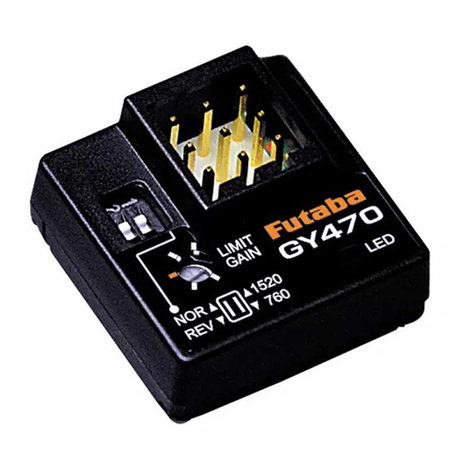
FUTABA
FUTABA GY470 instruction manual

LEGO
LEGO 41116 manual

Fisher-Price
Fisher-Price ColorMe Flowerz Bouquet Maker P9692 instruction sheet
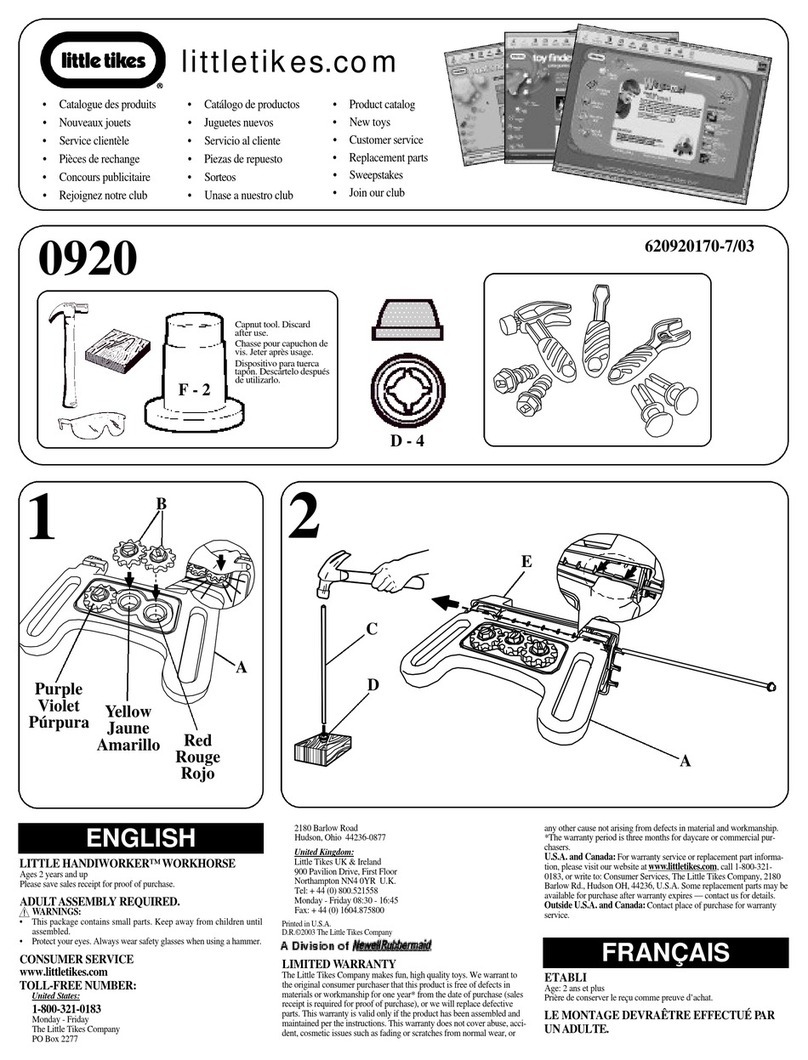
Little Tikes
Little Tikes LITTLE HANDIWORKER 0920 Assembly instructions

Eduard
Eduard EF-2000 Two-seater exterior Assembly instructions

USA Trains
USA Trains EXTENDED VISION CABOOSE instructions

